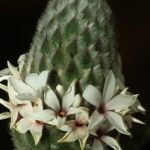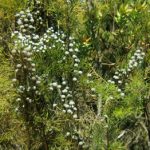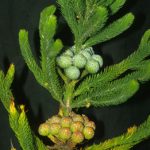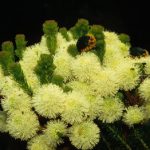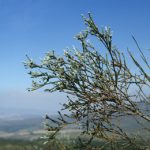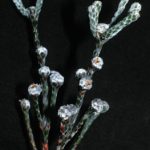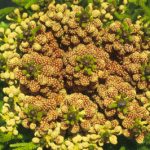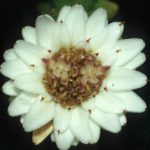Bruniaceae is a South African family of shrubby species living in the fynbos biome. As one of the few endemic elements, the family plays an important role in reconstructing the history of the Cape Floristic Region.
Our morphological analysis revealed an enormous variation in the architecture of Bruniaceae. To reduce diversity, a revised reference framework was introduced for inflorescences in woody plants. Field investigations revealed that nectar is secreted from the base of the gynoecium, that flies, beetles and other unspecialized insects act as pollinators and that both protandry and protogyny occur. Autogamy and geitonogamy has been proven in some species.
Bruniaceae evolved pseudanthia in the genera Staavia and Nebelia. To reconstruct evolution, we conducted a molecular phylogenetic study. Bruniaceae appear to be an old relict group with relatively young speciation events going along with the Miocene-Pliocene climate change. Based on molecular and morphological data, a new classification of the family with three tribes, six genera and 81 species has been proposed.
